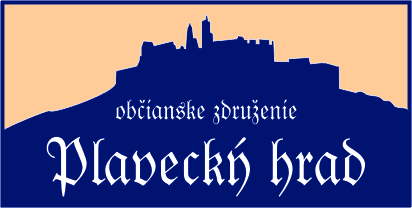View
The perfect view of the landscape that the visitors of the upper castle are met with, besides the natural beauty, shows us the manner of protection of the borderland during the Middle-Ages, based on a mutual visual contact of these guard castles.
Looking out from the Plaveč castle towards the north-east in good weather, out in the distance, we can see the city of Senica and behind it, the silhouette of the castle Branč, standing on a lonely conical hilltop. To its right, we can see the rotating sails of a wind power plant standing on a hill, behind which the ruins of the castle Korlátka stand. In the past, however, the tower of the Korlátka castle rose high above the ridge and made direct communication with the Plaveč castle possible.
Further to the right, we can see the Záruby massif, the highest peak of the Small Carpathians. On its slope, just above the horizon, stand the ruins of Ostrý Kameň. Despite the castle hiding behind a hill, for the purposes of communication with Plaveč castle, there was a communication outpost constructed on the ridge of Záruby. The peak nearest to Plaveč castle is Pohanská. Its flat top is home to an extensive Celtic hill fort.
To the right of Pohanská, out in the distance, the Small Carpathian range continues with the pronounced peaks Vápenná and Vysoká. On the western, north-western, northern and north-eastern side, below the castle, the Záhorská lowland spreads, which in 1273 was the stage of the battle between Hungarian and Czech armies.


